Friday, July 25, 2008
Aurora Triumphans (1877-8) oil painting by Evelyn de Morgan (1855-1919) returns to Bournemouth
0 comments Posted by Joseph Letzelter at 4:45 AM One of the key paintings of Bournemouth’s Russell-Cotes Art Gallery & Museum returns home today, Tuesday 15 April 2008, following a two-year absence for important conservation work.
One of the key paintings of Bournemouth’s Russell-Cotes Art Gallery & Museum returns home today, Tuesday 15 April 2008, following a two-year absence for important conservation work. Evelyn de Morgan’s (1855-1919) Aurora Triumphans has been a big draw to the town for art lovers for many years. It was bought by Herbert Russell-Cotes, son of Sir Merton & Lady Russell-Cotes, in circa 1922.
Aurora Triumphans is one of Evelyn de Morgan’s key works. It was exhibited at the Grosvenor Gallery, London, in 1886, the year before her marriage to the potter William de Morgan. The de Morgans were leading figures in the Art & Crafts movement.
The subject of the painting is Aurora, the ancient Greek goddess of dawn, ‘breaking free’ from the ‘shackles of night’. It is a fitting subject for the Russell-Cotes Art Gallery & Museum with the ‘day & night’ theme that runs throughout the house. Further background information about the painting and the artist follows this news release.
Tuesday, July 22, 2008
 Hard-edge oil painting consists of rough, straight edges original oil painting that are geometrically consistent. It encompasses rich solid colors of art reproductions, neatness of surface, and arranged forms all over the oil painting on canvas. The Hard-edge oil painting style is related to Geometric abstraction of fine art painting, Post-painterly Abstraction, and Color Field oil painting. The term Original oil painting was coined by writer, curator and Los Angeles Times art reproduction critic Jules Langsner in 1959 to describe the work of original oil painters from California, who, in their reaction to the more painterly of oil paintings or gestural forms of Abstract expressionism, adopted a knowingly impersonal original oil paint application and delineated areas of painting color with particular sharpness and good clarity. This approach to abstract oil painting became widespread in the 1960s, though
Hard-edge oil painting consists of rough, straight edges original oil painting that are geometrically consistent. It encompasses rich solid colors of art reproductions, neatness of surface, and arranged forms all over the oil painting on canvas. The Hard-edge oil painting style is related to Geometric abstraction of fine art painting, Post-painterly Abstraction, and Color Field oil painting. The term Original oil painting was coined by writer, curator and Los Angeles Times art reproduction critic Jules Langsner in 1959 to describe the work of original oil painters from California, who, in their reaction to the more painterly of oil paintings or gestural forms of Abstract expressionism, adopted a knowingly impersonal original oil paint application and delineated areas of painting color with particular sharpness and good clarity. This approach to abstract oil painting became widespread in the 1960s, though Hard edge oil painting is also a simply descriptive term, as applicable to past works as to future original oil artistic production. The term oil painting on canvas refers to the abrupt transition across "hard edges" between one color area to another color area. Canvas painting Color within "color areas" is generally reliable, that is, homogenous. Hard-edged oil painting can be both figurative and nonrepresentational.
Monday, July 21, 2008
ACT Policing is investigating the theft of a valuable oil painting by renowned Australian landscape artist Tom Roberts.
The work, which in its frame measures 560mm in height by 455mm wide, was stolen from a wall at University House on Balmain Crescent in Acton.
The work is entitled “Road near the Goulburn River” and is conservatively valued at $25,000.
The theft was reported to police yesterday, and has occurred while University House underwent refurbishment.
It is believed the painting was stolen sometime between April 30 and June 18 this year.
Friday, July 18, 2008
 The term contemporary art gallery refers generally to a privately-owned for-profit commercial art gallery. These art galleries are often found clustered together as art reproductions in large urban centers. The
The term contemporary art gallery refers generally to a privately-owned for-profit commercial art gallery. These art galleries are often found clustered together as art reproductions in large urban centers. The Contemporary art galleries are generally open to the general public with no charge; yet, some are semi-private. These Art reproductions usually profit by taking a cut of the art's sales; from 25 to 50% is common. There are also numerous not-for-profit and art-collective art galleries. Some art reproduction galleries in cities like
A contemporary art gallery's definition can also include the art gallery artist run centre, which often operates as a space with a more independent selection and attitude.
Thursday, July 10, 2008
 Acrylic paint is fast aeration paint that contains pigment hovering in an acrylic polymer emulsion. Acrylic paints could be diluted with water, but turn into water-resistant when dried up. Depending on how greatly the paint is diluted (with water) or customized with acrylic gels, mediums, or paste, the completed acrylic painting can look like a watercolor or an oil painting, or have its own unique characters not attainable with the other medium.
Acrylic paint is fast aeration paint that contains pigment hovering in an acrylic polymer emulsion. Acrylic paints could be diluted with water, but turn into water-resistant when dried up. Depending on how greatly the paint is diluted (with water) or customized with acrylic gels, mediums, or paste, the completed acrylic painting can look like a watercolor or an oil painting, or have its own unique characters not attainable with the other medium. Friday, July 4, 2008
 Faux painting are commonly called Faux finishing are terms used to portray a wide range of ornamental painting techniques. From the French utterance for "fake", faux painting begin as a shape of replicating materials such as granite and wood with paint, but has come to encompass various other decorative finishes for ramparts and furnishings.
Faux painting are commonly called Faux finishing are terms used to portray a wide range of ornamental painting techniques. From the French utterance for "fake", faux painting begin as a shape of replicating materials such as granite and wood with paint, but has come to encompass various other decorative finishes for ramparts and furnishings.History of Faux Painting
Faux finishing has been in use for millennia, as of cave painting to Ancient Egypt, but what we usually think of as faux finishing in Decorative Arts begin with Plaster as well as Stucco Finishes in Mesopotamia over 5000 years before.
Faux became vastly popular in Classical times in the form of faux Wood, faux Marble, and Trompe l'oeil Murals. Artists would trainee for 10 years or further with a master faux artist before work on their own. Great credit was rewarded to artiste who could really trick viewers into believing their work was the genuine thing. Faux painting has continued to be more popular throughout the ages, but experienced main resurgences in the neoclassical revitalization of the nineteenth century and the Art Deco style of the 1920s. Throughout the modern history of attractive painting, faux finishing has been mostly used in profit-making and public spaces.
In the late 1980s and early on 1990s faux finishing saw another major revitalization, as wallpaper began to fall out of style. At this point, faux painting has started to become tremendously popular in home environment, with high end homes leading the trend. While it can be quite costly to hire an expert faux finisher, numerous faux painting techniques are easy enough for a beginning home proprietor to create with a little training. People are also fascinated to the ease of changing a faux finish, as it can be simply painted over compared with the harass of eliminating wallpaper.
Tajmahal Paintings
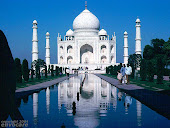
Painting Iteams
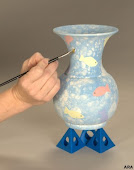
Creation of Paintings

Painting Equipments

Beautiful Rose Painting
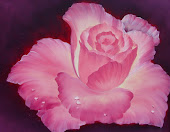
Green Nature Painting
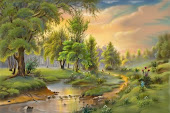
Canvas Painting

Pictute of Artist

Color Paintings
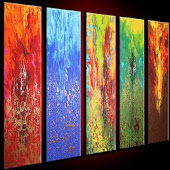
Online Paintings

